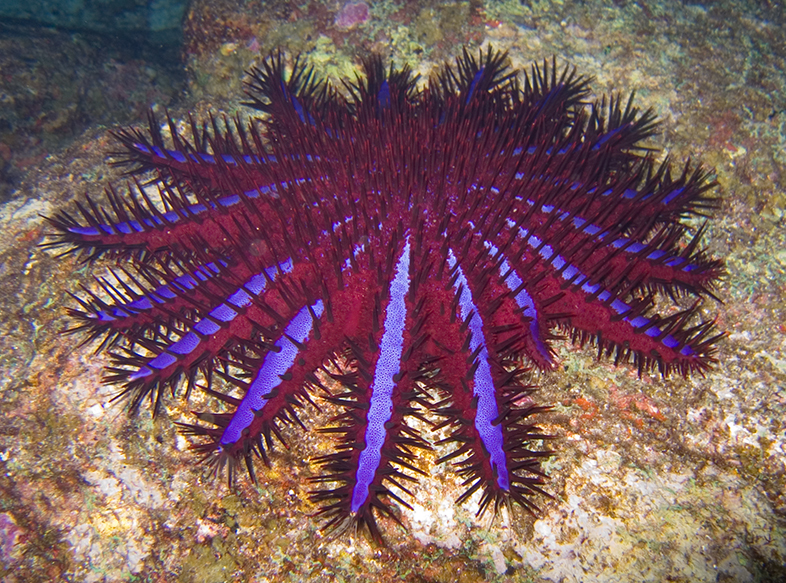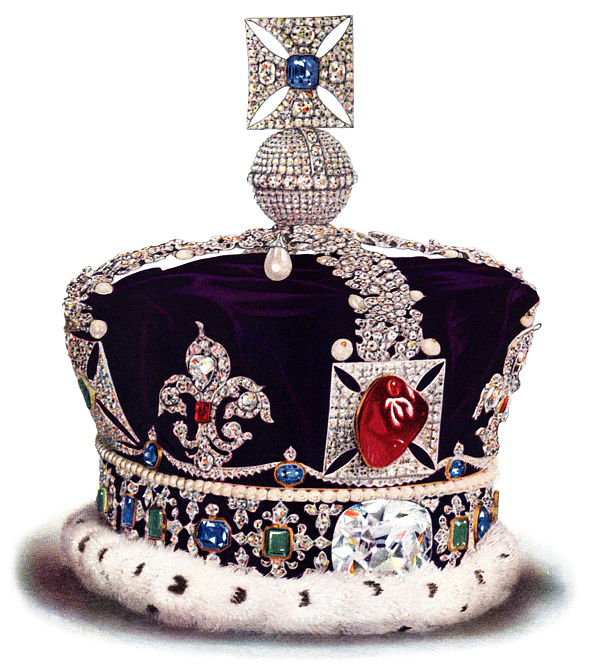|
Acanthasteridae
''Acanthaster'' is a bitypic genus of large and venomous starfish placed in its own family, Acanthasteridae. Its two members are known as crown-of-thorns starfish. ''Acanthaster'' are native to coral reefs in Indo-Pacific region. The species in this genus are a contributor to coral reef degradation because they prey on a large amount of live coral at high density. Species These species are listed in the World Register of Marine Species: Some sources add ''Acanthaster ellisi'', (Gray, 1840) in the eastern Pacific, but it is now considered as a subspecies of ''A. planci''. Haszprunar, Vogler & Wörheide (2017) suggest to split "''A. planci''" in : * ''Acanthaster planci'' (Linnaeus, 1758) -- Northern Indian Ocean, always purple-blue and red * ''Acanthaster mauritiensis'' de Loriol, 1885 -- Souther Indian Ocean * ''Acanthaster solaris'' (Schreber, 1795) -- Pacific Ocean (max. 23 arms) * ''Acanthaster benziei'' Wörheide, Kaltenbacher, Cowan & Haszprunar, 2022—Red Sea (max. 1 ... [...More Info...] [...Related Items...] OR: [Wikipedia] [Google] [Baidu] |
Crown-of-thorns Starfish
The crown-of-thorns starfish (frequently abbreviated to COTS), ''Acanthaster planci'', is a large starfish that preys upon hard, or stony, coral polyps (Scleractinia). The crown-of-thorns starfish receives its name from venomous thornlike spines that cover its upper surface, resembling the biblical crown of thorns. It is one of the largest starfish in the world. ''A. planci'' has a very wide Indo-Pacific distribution. It is perhaps most common around Australia, but can occur at tropical and subtropical latitudes from the Red Sea and the East African coast across the Indian Ocean, and across the Pacific Ocean to the west coast of Central America. It occurs where coral reefs or hard coral communities occur in the region. Description The body form of the crown-of-thorns starfish is fundamentally the same as that of a typical starfish, with a central disk and radiating arms. Its special traits, however, include being disc-shaped, multiple-armed, flexible, prehensile, heavily spine ... [...More Info...] [...Related Items...] OR: [Wikipedia] [Google] [Baidu] |
Acanthaster Brevispinus
''Acanthaster brevispinus'', the short-spined crown-of-thorns starfish, is one of the two members of the starfish genus ''Acanthaster'', along with the much better-known ''Acanthaster planci, A. planci'', the common crown-of-thorns starfish. Physical description The body form of ''A. brevispinus'' is fundamentally the same as that of a typical starfish or seastar. Like ''A. planci'', however, its distinctive traits include being disc-shaped, multiple-armed with multiple madreporites, flexible, prehensile, and densely spined, and having a large ratio of stomach surface to body mass. Its prehensile ability arises from the two rows of numerous tube feet that extend to the tip of each arm. In being multiple-armed, it has lost the five-fold symmetry (pentamerism) typical of starfish, although it begins with this Symmetry in biology, symmetry in its life cycle. ''Acanthaster brevispinus'' is readily distinguished from ''A. planci'' in that it has: * dense blunt spines over the upper (a ... [...More Info...] [...Related Items...] OR: [Wikipedia] [Google] [Baidu] |
Australia
Australia, officially the Commonwealth of Australia, is a country comprising mainland Australia, the mainland of the Australia (continent), Australian continent, the island of Tasmania and list of islands of Australia, numerous smaller islands. It has a total area of , making it the list of countries and dependencies by area, sixth-largest country in the world and the largest in Oceania. Australia is the world's flattest and driest inhabited continent. It is a megadiverse countries, megadiverse country, and its size gives it a wide variety of landscapes and Climate of Australia, climates including deserts of Australia, deserts in the Outback, interior and forests of Australia, tropical rainforests along the Eastern states of Australia, coast. The ancestors of Aboriginal Australians began arriving from south-east Asia 50,000 to 65,000 years ago, during the Last Glacial Period, last glacial period. By the time of British settlement, Aboriginal Australians spoke 250 distinct l ... [...More Info...] [...Related Items...] OR: [Wikipedia] [Google] [Baidu] |
Thailand
Thailand, officially the Kingdom of Thailand and historically known as Siam (the official name until 1939), is a country in Southeast Asia on the Mainland Southeast Asia, Indochinese Peninsula. With a population of almost 66 million, it spans . Thailand Template:Borders of Thailand, is bordered to the northwest by Myanmar, to the northeast and east by Laos, to the southeast by Cambodia, to the south by the Gulf of Thailand and Malaysia, and to the southwest by the Andaman Sea; it also shares maritime borders with Vietnam to the southeast and Indonesia and India to the southwest. Bangkok is the state capital and List of municipalities in Thailand#Largest cities by urban population, largest city. Tai peoples, Thai peoples migrated from southwestern China to mainland Southeast Asia from the 6th to 11th centuries. Greater India, Indianised kingdoms such as the Mon kingdoms, Mon, Khmer Empire, and Monarchies of Malaysia, Malay states ruled the region, competing with Thai states s ... [...More Info...] [...Related Items...] OR: [Wikipedia] [Google] [Baidu] |
10th Edition Of Systema Naturae
The 10th edition of ''Systema Naturae'' (Latin; the English title is ''A General System of Nature'') is a book written by Swedish naturalist Carl Linnaeus and published in two volumes in 1758 and 1759, which marks the starting point of zoological nomenclature. In it, Linnaeus introduced binomial nomenclature for animals, something he had already done for plants in his 1753 publication of ''Species Plantarum''. Starting point Before 1758, most biological catalogues had used polynomial names for the taxa included, including earlier editions of ''Systema Naturae''. The first work to consistently apply binomial nomenclature across the animal kingdom was the 10th edition of ''Systema Naturae''. The International Commission on Zoological Nomenclature therefore chose 1 January 1758 as the "starting point" for zoological nomenclature and asserted that the 10th edition of ''Systema Naturae'' was to be treated as if published on that date. Names published before that date are unavailable, ... [...More Info...] [...Related Items...] OR: [Wikipedia] [Google] [Baidu] |
Carl Linnaeus
Carl Linnaeus (23 May 1707 – 10 January 1778), also known after ennoblement in 1761 as Carl von Linné,#Blunt, Blunt (2004), p. 171. was a Swedish biologist and physician who formalised binomial nomenclature, the modern system of naming organisms. He is known as the "father of modern Taxonomy (biology), taxonomy". Many of his writings were in Latin; his name is rendered in Latin as and, after his 1761 ennoblement, as . Linnaeus was the son of a curate and was born in Råshult, in the countryside of Småland, southern Sweden. He received most of his higher education at Uppsala University and began giving lectures in botany there in 1730. He lived abroad between 1735 and 1738, where he studied and also published the first edition of his ' in the Netherlands. He then returned to Sweden where he became professor of medicine and botany at Uppsala. In the 1740s, he was sent on several journeys through Sweden to find and classify plants and animals. In the 1750s and 1760s, he co ... [...More Info...] [...Related Items...] OR: [Wikipedia] [Google] [Baidu] |
Crown Of Thorns-jonhanson
A crown is a traditional form of head adornment, or hat, worn by monarchs as a symbol of their power and dignity. A crown is often, by extension, a symbol of the monarch's government or items endorsed by it. The word itself is used, particularly in Commonwealth countries, as an abstract name for the monarchy itself (and, by extension, the state of which said monarch is head) as distinct from the individual who inhabits it (that is, ''The Crown''). A specific type of crown (or coronet for lower ranks of peerage) is employed in heraldry under strict rules. Indeed, some monarchies never had a physical crown, just a heraldic representation, as in the constitutional kingdom of Belgium. Variations * Costume headgear imitating a monarch's crown is also called a crown hat. Such costume crowns may be worn by actors portraying a monarch, people at costume parties, or ritual "monarchs" such as the king of a Carnival krewe, or the person who found the trinket in a king cake. * The nup ... [...More Info...] [...Related Items...] OR: [Wikipedia] [Google] [Baidu] |
Paul Gervais
Paul Gervais (full name: François Louis Paul Gervais) (26 September 1816 – 10 February 1879) was a French palaeontologist and entomologist. Biography Gervais was born in Paris, where he obtained the diplomas of doctor of science and of medicine, and in 1835 he began palaeontological research as assistant in the laboratory of comparative anatomy at the ''Muséum national d'Histoire naturelle''. In 1841 he obtained the chair of zoology and comparative anatomy at the Faculty of Sciences in Montpellier, of which he was in 1856 appointed dean. In 1848–1852 appeared his important work ''Zoologie et paléontologie françaises'', supplementary to the palaeontological publications of Georges Cuvier and Henri Marie Ducrotay de Blainville; of this a second and greatly improved edition was issued in 1859. In 1865 he accepted the professorship of zoology at the Sorbonne, vacant through the death of Louis Pierre Gratiolet; this post he left in 1868 for the chair of comparative anatomy a ... [...More Info...] [...Related Items...] OR: [Wikipedia] [Google] [Baidu] |






